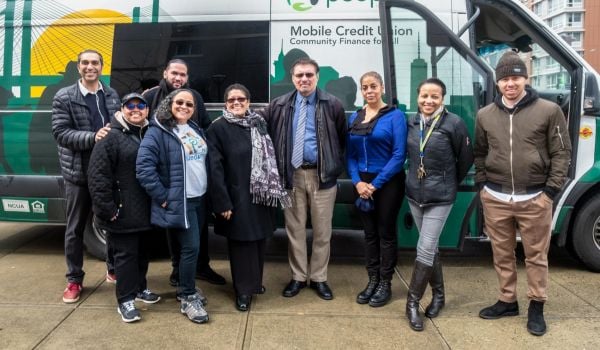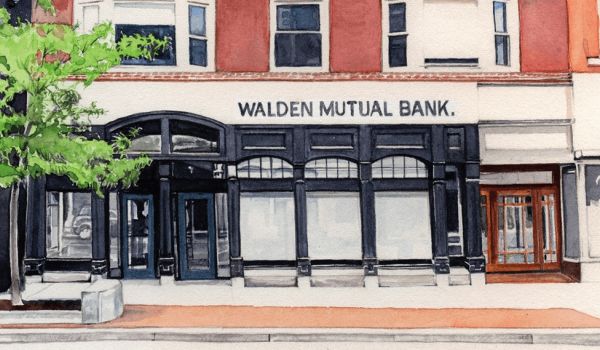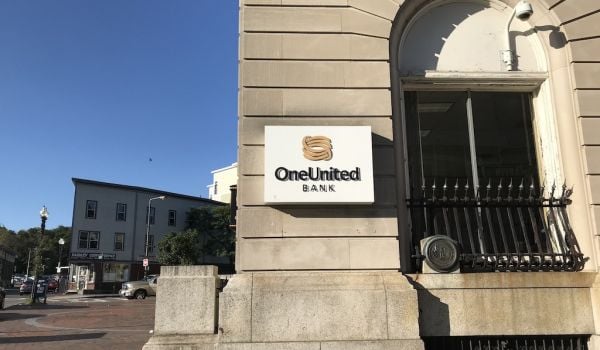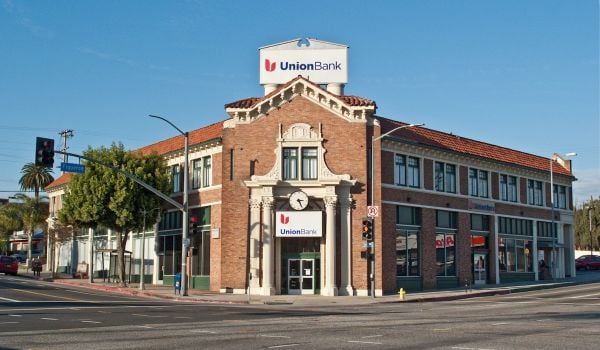Shannan Herbert came up professionally as an internal enforcer of rules and guidelines for lending. Now, through a new network of chief credit officers and loan underwriters focused on combating racial disparities, she’s part of a larger effort to rewrite them.
Herbert grew up in Montgomery County, Maryland, just outside of Washington, D.C. After graduating from Howard University with a finance degree, she took a job as a junior credit analyst, assessing the risk of commercial loan applications at a bank, or what banks call underwriting commercial loans.
Through an on-the-job credit training program that exposed junior staff to different departments, Herbert got to know the common underwriting refrains, like the “Five C’s” of credit. Bankers like to say they use these criteria – character, capacity, collateral, capital and conditions — to assess borrowers for credit worthiness. But most borrowers, and even some bankers will tell you that there’s more emphasis on some C’s over others. That often creates a bias against those who haven’t inherited much in assets they can use as collateral or cash they can use as capital.
“When you’re a trainee and someone is telling you this is the policy, you think, ‘Okay, well, this is policy, this is what we have to do,’” Herbert says. “But start to peel it back a little bit and you see how bias creeps into these decisions, into these policies, into these procedures, so that they become so commonplace that you don’t even realize that it’s happening.”
Herbert didn’t yet recognize what was happening as she progressed along a “linear” career path in traditional bank underwriting, from credit analyst all the way up to chief credit officer — the typical title for a person who oversees a bank’s entire underwriting or credit department.
Chief credit officers and their departments typically stay behind the scenes, in contrast with the loan officers or the lending team who are out cultivating and working face-to-face with clients. If the lending team are like the bank’s good cops — friendly faces to potential borrowers — the credit team are the bad cops, the ones who seem like their job is to find any reason to deny a loan application. They’re meant to balance each other out; loan officers are supposed to advocate for their clients while the credit team’s job is to protect the bank’s depositors and shareholders from taking on too much risk or unknown risks. Of course, it doesn’t always work out perfectly.
Herbert, who later earned an MBA with a specialization in finance, became one of the few Black women to ever rise to the level of chief credit officer at a bank. But it wasn’t until she joined City First Bank as chief credit officer in 2019 that Herbert finally started to peel back the layers of the underwriting onion. From their initial organizing meetings in the basement of D.C.’s Foundry United Methodist Church, City First Bank’s mostly Black founders intended for the bank to make loans to people and neighborhoods that traditional banks ignored — largely because of the way traditional banks interpreted the “Five C’s” of credit.
City First, she says, “had already taken some steps to put things in place recognizing that there are disparities we have to solve for, taking a look at loan policy and saying we don’t have to do these things, our loan policy doesn’t have to mirror the loan policy of a traditional bank, we can be different because of what we do and who we serve.”
“Having been in those traditional banking spaces and now having the freedom to do these things, it was really liberating,” she says.

Shannan Herbert, executive vice president of inclusive credit at Stratyfy, helped create the Underwriting for Racial Justice National Working Group.
“Now instead of having these individual banks doing these programs in little silos and keeping their information to themselves, it’s national,” Herbert says. “It’s opening things up for more users making it more accessible and taking the fear, I think, out of it as well.”
Not everything every working group member can do can be replicated by others across the network, but the network hopes to serve as a knowledge and data hub as more banks start to take on this challenge of weeding out inherent bias in underwriting.
It could have been just a marketing and public relations exercise.
Erin Kilmer Neel is the chief impact officer at Beneficial State Foundation, a unique foundation that is the primary shareholder of Beneficial State Bank. Based in Oakland, California, the bank focuses on lending to low- and moderate-income borrowers and community development projects up and down the West Coast. Meanwhile the foundation funds or houses various initiatives, like the Underwriting for Racial Justice Working Group, which aim to provide further benefit to the bank’s communities.
Kilmer Neel, who is white, was at a conference session a few years ago with other similarly mission-oriented banks across the country discussing impact measurement and marketing around racial equity. That’s when she thought to herself: You know who is missing from this room? The underwriting department.
“In addition to measuring and communicating what we’re doing, if we’re going to change what we’re doing, we need to convene underwriters,” Kilmer Neel says.
Kilmer Neel shared her thoughts with a counterpart at City First Bank. That person gave Kilmer Neel Herbert’s phone number. It was love at first call.
“I got this call from Erin and she tells me this idea, and I’m like, ‘Okay, this is, like, right on time,’” Herbert says. “Because I’m developing policies and looking at the way that we’re doing our underwriting and how to reach more customers and are we doing this with a racial equity lens in all situations, wondering can we be better? How do we evolve? How do we improve upon what we’re doing currently? This just seemed like the perfect way to learn from those in the industry.”

Erin Kilmer Neel is the chief impact officer at Beneficial State Foundation.
Instead of remaining siloed exceptions to the rules scattered across the country, they want to write new rules for underwriting that account for historic racial disparities in collateral, credit scores and other key factors.
They knew from the start it would have to be a sustained, multi-year effort. While it’s true banks do regularly tweak lending policies around the edges in response to economic conditions — more lax during economic booms, a little stricter during downturns — it’s much rarer to change lending policies on a deeper level. And as much as Herbert or other chief credit officers might be able to do on their own, the most meaningful loan policy changes require approval from a bank’s board of directors. Not to mention there are also bank regulators, who themselves tend to prefer banks stick with the traditional cookie-cutter underwriting practices across the board.
Pointing to performance data from other examples is the best way Herbert knows to convince board members or regulators to let banks adopt new underwriting policies. That’s why the Underwriting for Racial Justice Working Group started out by various members presenting to the rest of the group what their institutions have already been doing to be able to make loans that don’t fit under traditional underwriting guidelines.
Representing City First, Herbert presented the bank’s “unitranche” loans for affordable housing or commercial real estate projects. Typical underwriting guidelines dictate that banks loan up to 50% or 80% of the value of the underlying property for such projects, requiring developers to go elsewhere, perhaps their own pockets, to come up with the rest of what they might need for a project. It’s a constraint that’s severely limiting if you don’t have access to personal wealth or wealth from family or friends; because of historic and ongoing systemic racism, according to the Federal Reserve, Black households today still have just one-eighth the median wealth of white households.

(Photo by Unsplash / Getty Images)
Knowing that, as Herbert explains, City First Bank can make a loan up to 90% of the value of an underlying property, reducing the amount that developers need to come up with on their own. That’s good for Black developers, cash-strapped nonprofits and tenant-owned cooperative projects that don’t have a lot of their own cash to bring to the table.
It’s made possible because behind the scenes it’s actually two loans: one from City First Bank up to the amount acceptable under traditional guidelines, and a second coming from City First Enterprises, a nonprofit loan fund affiliated with the bank. As a non-regulated lender, the nonprofit loan fund can make loans on terms that traditional bank underwriting might deem too risky, but as an affiliate of the bank, you can make it appear to the borrower that it’s just one big loan covering almost all of what they need. The nonprofit gets its cash from philanthropic donations, grants from public agencies, and even dividends from the bank — it’s still among City First’s largest shareholders, with a 15% ownership stake in the bank.
Those in the working group were curious as to how the unitranche loans worked from a customer service standpoint. In other words, how do you ensure it appears as one loan to the borrower? And of course there was the all-important question of how those loans are “performing” — in other words, what’s been the historic delinquency and default rates? Under Herbert’s tenure at City First, unitranche loans never missed a repayment.
As Herbert notes, not every bank in the Underwriting for Racial Justice Working Group has an affiliated nonprofit loan fund set up the same way, so it’s challenging to replicate exactly. Some instead may have relationships with other nonprofit loan funds in their own communities that might be able to plug into that gap in the structure. But the idea is to go beyond just doing such deals as one-offs, and to instead develop a formal product offering that the bank can market to potential borrowers on a sustained, institutionalized basis.
Herbert has since departed City First Bank, but remains an active member of the working group. In September, she took on a new role as executive vice president of inclusive credit at fintech startup Stratyfy, which aims to remove hidden bias in lending through automation. In her new role, she’s working with a portfolio of chief credit officers at banks and other lending institutions to help them identify and eliminate bias in their underwriting practices.
In its first two years, members of the working group got to cross-examine each other around a handful of other lending product examples like City First. There was also an entire session on Special Purpose Credit Programs (watch a video recording here). As Next City reported last year, SPCPs are specifically authorized under the Equal Credit Opportunity Act as a way for banks to make loans using different underwriting criteria specific to borrowers of different races, genders, or other protected classes.
Let’s say a Black or Latina small business owner walks into your bank looking for a loan, and you know as a group this demographic is likely to have lower credit scores on average than white business owners because of that structural bias and not because of actual likelihood to repay a small business loan. You can set your lending policy to account for that. It has to be done very carefully, and with full transparency to bank regulators, but, as long as conditions of historic discrimination show up in credit scores, banks have the option to set lower credit score minimums for women or people of color versus white male clients. Same loans on similar terms, but using different criteria accounting for historic flaws in credit scoring or persistent disparities in personal and family wealth.
After working group members heard from one California-based bank, which has been operating a special purpose credit program for small business and commercial real estate lending since 1993, Kilmer Neel is hopeful some members will roll out similar programs in their communities later this year.
Regardless of what any member’s institution rolls out, Kilmer Neel’s foundation plans to aggregate performance data across the network based on the different parameters and structures in place (or soon to be in place) designed to address racial disparities in bank underwriting.
It’s all designed to arm chief credit officers and their staff with the answers they need to convince board members and regulators to write new rules for bank underwriting.
“Anyone that wants to do a special purpose credit program can come in and see performance data and see how this works,” Herbert says. “Or if you stop using credit scores, this is the performance data, or if you change your [loan-to-value] requirements, this is the performance data that we have.”
This article is part of The Bottom Line, a series exploring scalable solutions for problems related to affordability, inclusive economic growth and access to capital. Click here to subscribe to our Bottom Line newsletter.

Oscar is Next City's senior economic justice correspondent. He previously served as Next City’s editor from 2018-2019, and was a Next City Equitable Cities Fellow from 2015-2016. Since 2011, Oscar has covered community development finance, community banking, impact investing, economic development, housing and more for media outlets such as Shelterforce, B Magazine, Impact Alpha and Fast Company.
Follow Oscar .(JavaScript must be enabled to view this email address)


















